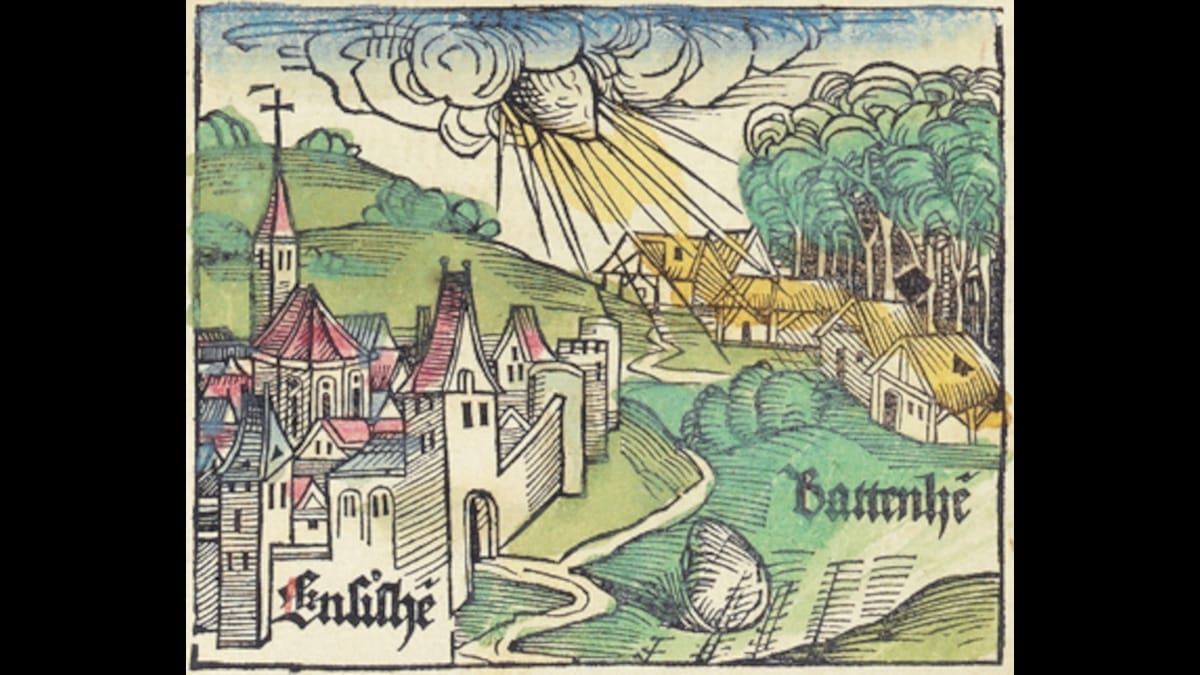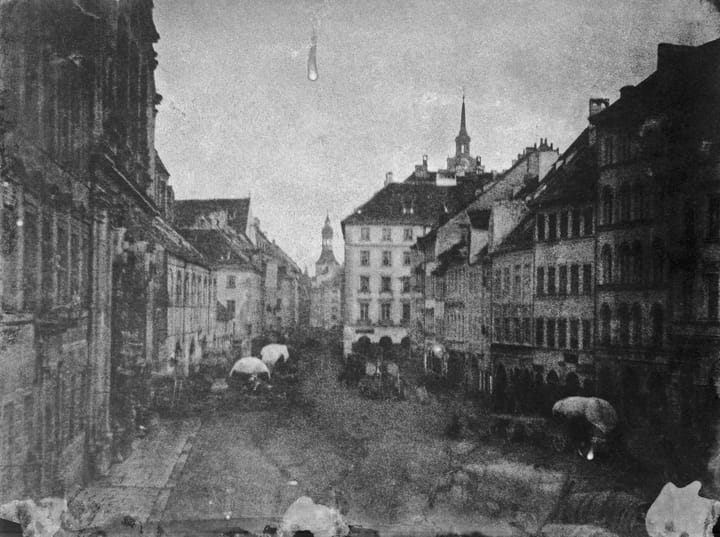The “Immense Portent”: the Ensisheim Meteorite of 1492.
Even a giant rock that fell from the sky could be politicized in 15th century Europe.

I am back from hiatus! I may make a post sometime in the next few days with some thoughts on my trip—and possibly some images—but I thought it was important to resume with some substantive historical content, which is what most of you signed up for.
Five hundred and thirty-three years ago tonight, on November 7, 1492, a large meteorite fell out of the sky and landed in a farm field near the walled city of Ensishem, which at the time was located in a province of Europe called “Further Austria” but which is now in France, the long-contested region of Alsace. The Ensisheim Meteorite is the oldest celestial impact in Europe whose fall was both observed and recorded at the time and for which fragments of the meteorite still exist. Indeed, a substantial chunk of the rock that fell from space that night is still located in the town museum in Ensisheim, called the Musée de la Régence, though there are other pieces of it in other locations.
The trail of the meteorite was observed for over 93 miles (150 km) as it streaked through the atmosphere, a true “falling star.” The piece of it that survived the fall through the air weighed 280 pounds (127 kg) and was made mostly of chondrite.
Sebastian Brandt, a noted humorist and writer of the time, composed an account of the fall of the meteorite which was widely published in the local provinces. Sigismondo Tisio, a Sienese observer, chronicled the meteorite in his own work published in 1498:
“At this point there has to be mention of the immense portent which was seen this year in Germany; for on the seventh day of November 1492, near the city of Ensisheim and the village of Bauenhem above Basel, a great stone fell out of the sky, triangular in shape, charred; the color of a metallic ore, and accompanied by crashing thunder and lightning. When it had fallen to earth it split into several pieces, for it had traveled at an oblique angle; to the amazement of all, indeed, it flattened the earth when it struck. A chunk of this rock was sent to Francesco Cardinal Piccolomini from Germany all the way to Rome, together with some verses skillfully composed by Sebastian Brant, of which a copy was made for me.”

Almost immediately the Ensisheim meteorite was appropriated for political purposes. In late 1492 a complex series of wars and revolts were going on in this part of Europe. Maximilian I, a Hapsburg ruler who would later (1508) become Holy Roman Emperor, was campaigning against France, and he proclaimed the fall of the meteorite to be an omen portending good fortune against his enemies. Maximilian did eventually prevail against the French, causing Brandt to pick up his pen again to remind everybody how prescient the “omen” was. Left unsaid was precisely why God would choose to show favor to a particular political ruler by dropping rocks from the sky, but whatever.
While the stone has been largely preserved, various pieces of it have been chipped away over the centuries, beginning almost immediately upon its impact. A part of its mass disappeared into various collections while the meteorite was sequestered in Colmar, another part of France, during the French Revolution. Today about 100 pounds of it survives in the Musée de la Régence. The material itself of which it is made apparently originated in the asteroid belt between Mars and Jupiter, and could be millions of years old. It’s a good example of how the layers of history—astronomical, geologic and human—can converge in a single object.
The Value Proposition
Why should you be reading this blog, or receiving it as a newsletter? This is why.
☕ If you appreciate what I do, buy me a virtual coffee from time-to-time to support my work. I know it seems small, but it truly helps.
📖 You could also buy my newest book.
🎓 Like learning? Find out what courses I’m currently offering at my website.
📽 More the visual type? Here is my YouTube channel with tons of free history videos.



Comments ()